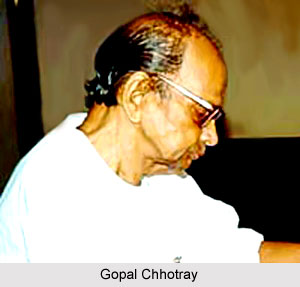 Theatre personalities of Orissa are the eminent people who worked with effort to popularise Oriya Theatre. The Oriya theatre comprises of a lot of variety. The Theatre personalities of Orissa worked in puppetry, like Kundhei Nata, Sakhi-kundhei Nata, Ravana Chhaya and in balladry like Daskathia, Pala with equal proficiency. The devotional ritual forms of theatre in Orissa like Danda Nata, Bandi Nata and others were patronised by the theatre personalities of Orissa.
Theatre personalities of Orissa are the eminent people who worked with effort to popularise Oriya Theatre. The Oriya theatre comprises of a lot of variety. The Theatre personalities of Orissa worked in puppetry, like Kundhei Nata, Sakhi-kundhei Nata, Ravana Chhaya and in balladry like Daskathia, Pala with equal proficiency. The devotional ritual forms of theatre in Orissa like Danda Nata, Bandi Nata and others were patronised by the theatre personalities of Orissa.
The diverse forms of Lila, including Yatra, Dhanu Yatra, Rahasa, Bharat Lila, mythological presentations such as Prahlada Nataka, Suanga, masked dance-drama like Chhau and Desia Nata, folk dance like Chaiti Ghoda Nata, and satire such as Mughal Tamsha are all famous today owing to the performances of the talented theatre personalities of Orissa. The rapid urbanization and the traditional elements are still visible in Oriya theatre, due to the visible efforts of the theatre personalities of Orissa.
The establishment of a permanent stage in 1875 by Jaga Mohan Lala in Mahanga village, Cuttack district, gave birth to contemporary Oriya theatre. Lala, one of the unforgettable theatre personalities of Orissa, also wrote the first Oriya social drama, Babaji i.e. "The Holy Man". The first play of the Oriya theatre personality Ramshankar Ray, Kanchi-Kaveri was presented in 1881 by an amateur group in Cuttack. Other early theatre personalities of Orissa included Bhikari Charan Patnaik, Kampal Mishra, and Godavarish Mishra. Gradually, interest for this kind of theatre grew among people. Meanwhile, permanent stages for Oriya theatre were erected by two chief theatre personalities of Orissa, namely Bira Bikram Dev`s Bikram Theatre at Khariar and Padmanav Rangalay at Paralakhemundi in Gajapati district.
Eventually, different professional troupes emerged that were lead by eminent theatre personalities of Orissa. Banamali Pati, one of the well known Oriya theatre artists did plays by Aswini Kumar Ghose but mostly toured parties. Kali Charan Patnaik was a reputed theatre personality of Orissa, who opened a company under a new name, Orissa Theatre, and housed in a permanent building (1942) at Banka Bazar, Cuttack. Also realising the changing tastes of the time, he transferred his interest to social plays. Govinda Chandra Surdeo, Mohansundar Deva Goswami, Ramchandra Mishra, Bhanja Kishore Patnaik, Gopal Chhotray, Ananda Sankar Das, and Kamal Lochan Mohanty are the reputed theatre personalities of Orissa.
The theatre personalities of Orissa have gained massive prominence in the recent day. Artists and dramatists are hired with the assurance of good remuneration. Actresses have been introduced. Modern theatre techniques are used and multi-stage systems have replaced single stages. To attract crowds, explicit scenes of violence, rape, and murder in the style of commercial films are performed.




















